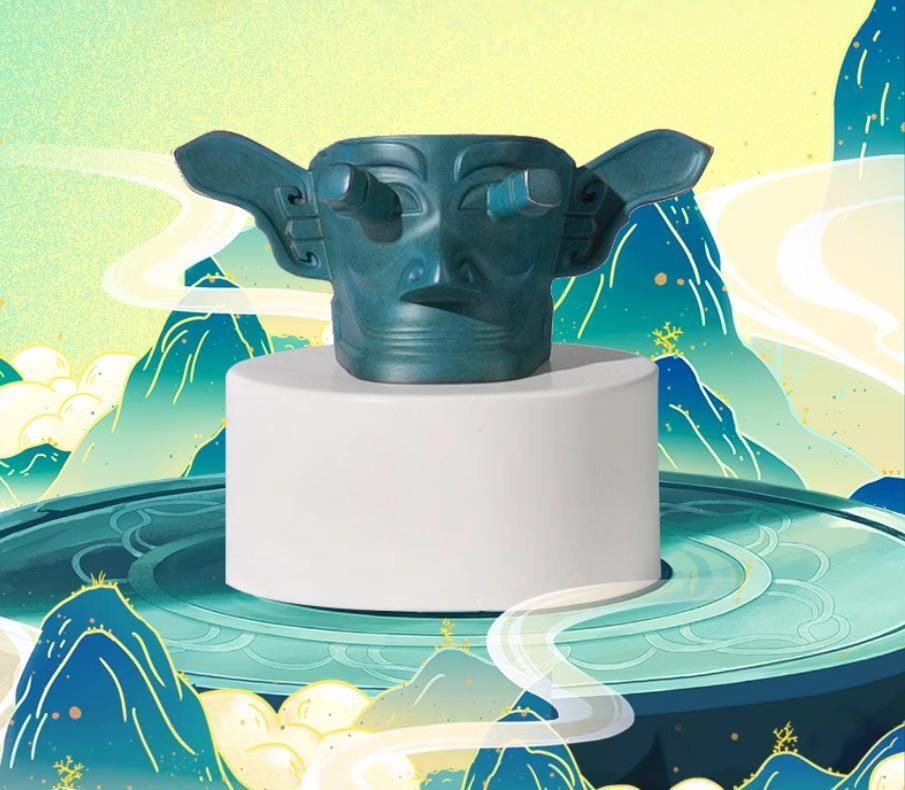Hebei, this ancient and fertile land, has nurtured countless precious intangible cultural heritages. From the solemn and vivid stone carvings of Quyang to the fantastic world of Hengshui inner painting; from the exquisite craftsmanship of Yishui inkstones to the delicate craftsmanship of Ding porcelain, which is one of the five famous porcelains in China, each intangible cultural heritage is a unique mark of Hebei culture.
However, the inheritance and protection of intangible cultural heritage is not easy. With the changes of the times, many intangible cultural heritage projects are at risk of being lost. On the basis of inheritance, Hebei's intangible cultural heritage industry is also constantly innovating. Combining tradition with modernity, intangible cultural heritage projects are integrated with modern design and scientific and technological means to launch new products with a sense of the times and market competitiveness. This not only allows intangible cultural heritage to enter the lives of more people, but also gives new vitality to Hebei's intangible cultural heritage industry.
The folk intangible cultural heritage under the feet of the emperor!:
1. Yishui Inkstone
Historical Origin:
Yishui Inkstone, also known as Yishui Ancient Inkstone, is one of the famous inkstones in China, known as "Southern End and Northern Yi". It is said to have originated in the Warring States Period and flourished in the Tang Dynasty, with a history of thousands of years. Produced in Yizhou, Hebei (now Yi County), it is famous for its unique stone quality and exquisite carving skills.
Representative Figures:
Zou Hongli, inheritor of the national intangible cultural heritage of Yishui Inkstone Making Skills, the first inkstone making master of China's Four Treasures of the Study, Chinese Arts and Crafts Master, and UNESCO Folk Arts and Crafts Artist.
Product Use:
Yishui Inkstone, as one of the Four Treasures of the Study, is mainly used for artistic creation such as calligraphy and painting, and also has collection and appreciation value.
Main Materials:
The inkstone stone of Yishui Inkstone is taken from a soft purple-gray sedimentary rock on the banks of Yishui River, with purple, green, white, brown, and naturally dotted with green and yellow spots.
Craft features:
Yishui inkstones are shaped according to the material and named according to the shape. Artists apply their skills according to the material, carefully design, skillfully use the inkstone stone, and have superb knife skills. The carved inkstone is exquisite and simple, moisture-proof and durable, easy to release ink, suitable for writing and painting, and fluent.
Social value at that time:
In ancient times, Yishui inkstones were tributes to the court and were loved and respected by literati and poets. Its production skills and quality represented the highest level of inkstone culture and art at that time.
Current artistic value:
Yishui inkstones, with their long history, gifted superior stone materials and unique artistic style, occupy an important position in the history of China's profound and exquisite inkstone culture and art. In 2008, the Yishui inkstone production skills were rated as "national intangible cultural heritage" by the State Council. Yishui inkstones have won hundreds of awards and are appreciated and cherished by people from all walks of life at home and abroad.
2. Ding porcelain
Historical origin:
The firing skills of Ding porcelain began in the Tang Dynasty and flourished in the Northern Song Dynasty. Because its place of origin, Quyang County, Hebei Province, belonged to Dingzhou in ancient times, it was named "Ding porcelain". Ding porcelain is mainly white porcelain, with a white and delicate body and a uniform glaze. It is known as "white as jade, thin as paper, and sound like a chime".
Representative figures:
(Due to data limitations, it is impossible to provide specific representatives of Ding porcelain firing techniques)
Product use:
Ding porcelain is mainly used for daily life utensils, such as bowls, plates, bottles, etc., and is also presented as tribute and gifts to the court and foreign friends.
Main materials:
The raw materials of Ding porcelain mainly include quartz, feldspar, clay, etc., which are finely processed and fired.
Process characteristics:
Ding porcelain firing techniques are complex, including five major process flows such as mud making, molding, decoration, glazing, and firing. Its decoration is mainly carved and printed, with smooth lines and exquisite patterns.
Social value at that time:
In the Song Dynasty, Ding porcelain became one of the imperial porcelains for its exquisite craftsmanship and unique artistic style, and was highly respected.
Today's artistic value:
Ding porcelain firing techniques are listed as one of the national intangible cultural heritages, and its artistic value and cultural connotation have been widely recognized. Ding porcelain, as a treasure of Chinese traditional culture, has extremely high collection and appreciation value.
3. Hengshui inner painting
Historical origin:
Hengshui inner painting originated in the Qing Dynasty and is a painting technique for the inner wall of snuff bottles. After the inheritance and development of artists from successive generations, it has gradually formed a unique artistic style.
Representative figures:
(Due to data limitations, it is impossible to provide specific Hengshui inner painting representatives)
Product use:
Hengshui inner painting is mainly used for the decoration of snuff bottles, and is also collected and appreciated as a work of art.
Main materials:
The main materials of Hengshui inner painting include snuff bottles and painting pigments. Snuff bottles are mostly made of transparent materials such as glass and crystal, and painting pigments are special pigments suitable for painting on transparent materials such as glass.
Craft characteristics:
Hengshui inner painting introduces the techniques of Chinese painting such as texture, rubbing, dyeing, dotting, hooking, and tearing into inner painting. The works are profound in conception, rigorous in composition, rich in line drawing techniques, and coordinated and refined in color.
Social value at that time:
In the Qing Dynasty, Hengshui inner painting was presented to foreign friends as a court tribute and gift, and its artistic value and cultural connotation were widely recognized.
Current artistic value:
Hengshui inner painting is listed as one of the national intangible cultural heritages, and its unique artistic style and exquisite craftsmanship have been widely praised. As one of the treasures of Chinese traditional culture, Hengshui inner painting has a very high collection and appreciation value.
4. Quyang Stone Sculpture
Historical Origin:
Quyang stone carving began in the Western Han Dynasty and has a history of more than 2,000 years. Since then, Quyang stone workers have used marble to carve steles and other items, and gradually formed a unique artistic style and exquisite carving skills. Quyang stone carving occupies an important position in the history of Chinese sculpture art due to its unique artistic charm and exquisite craftsmanship.
Representative figures:
(Due to data limitations, it is impossible to provide specific representatives of Quyang stone carving)
Product use:
Quyang stone carving is widely used in garden landscape, architectural decoration, urban sculpture and other fields. Its unique artistic style and exquisite craftsmanship make Quyang stone carvings an important carrier for inheriting and promoting Chinese culture.
Main materials:
The main material of Quyang stone carving is marble. Marble, with its fine texture, clear texture and rich colors, provides rich creative materials for Quyang stone carving.
Craft characteristics:
The craft characteristics of Quyang stone carving are mainly reflected in its carving skills and modeling design. In terms of carving skills, Quyang stone carving pays attention to the smoothness of lines and the vividness of shapes, and pursues the artistic effect of both form and spirit. In terms of modeling design, Quyang stone carving is good at using symbols, allegorical techniques, combining traditional cultural elements with modern aesthetic concepts, and creating works with a sense of the times and cultural connotations.
Social value at that time:
In ancient times, Quyang stone carving, as an important architectural and decorative art, was highly praised for its exquisite craftsmanship and unique artistic style. Many Quyang stone carvings were used in royal gardens, palaces, temples and other buildings, becoming an important part of the social culture at that time.
Today's artistic value:
As one of the treasures of Chinese traditional culture, Quyang stone carving has extremely high artistic value and cultural connotations. Its unique artistic style and exquisite carving skills not only provide valuable cultural heritage for future generations, but also provide important reference and inspiration for modern art creation. As one of the national intangible cultural heritages, Quyang stone carving has been widely inherited and carried forward, becoming one of the important representatives of Chinese culture.


